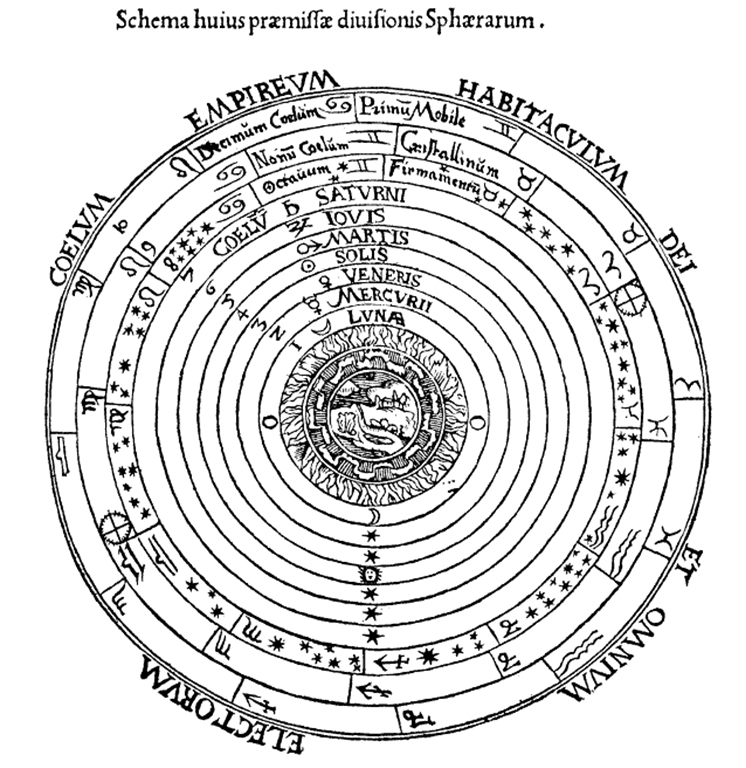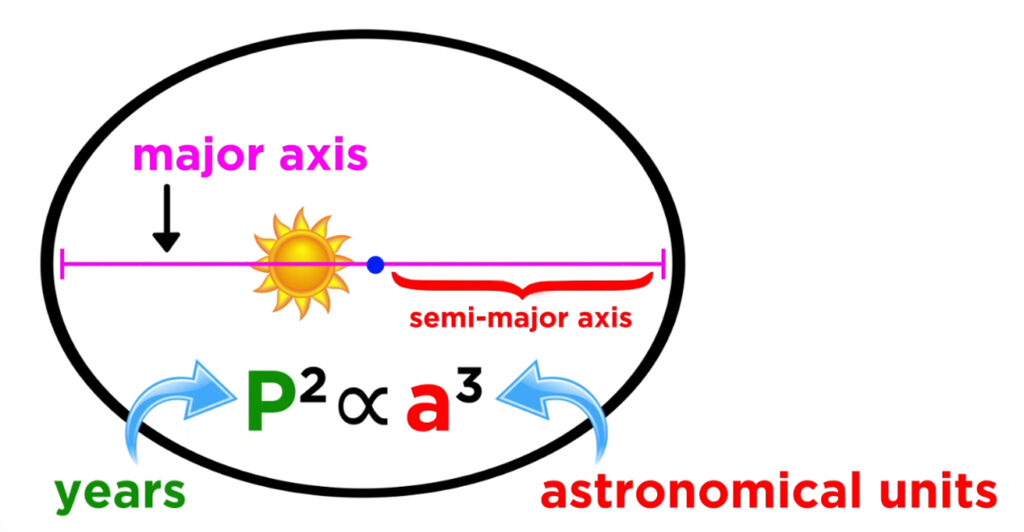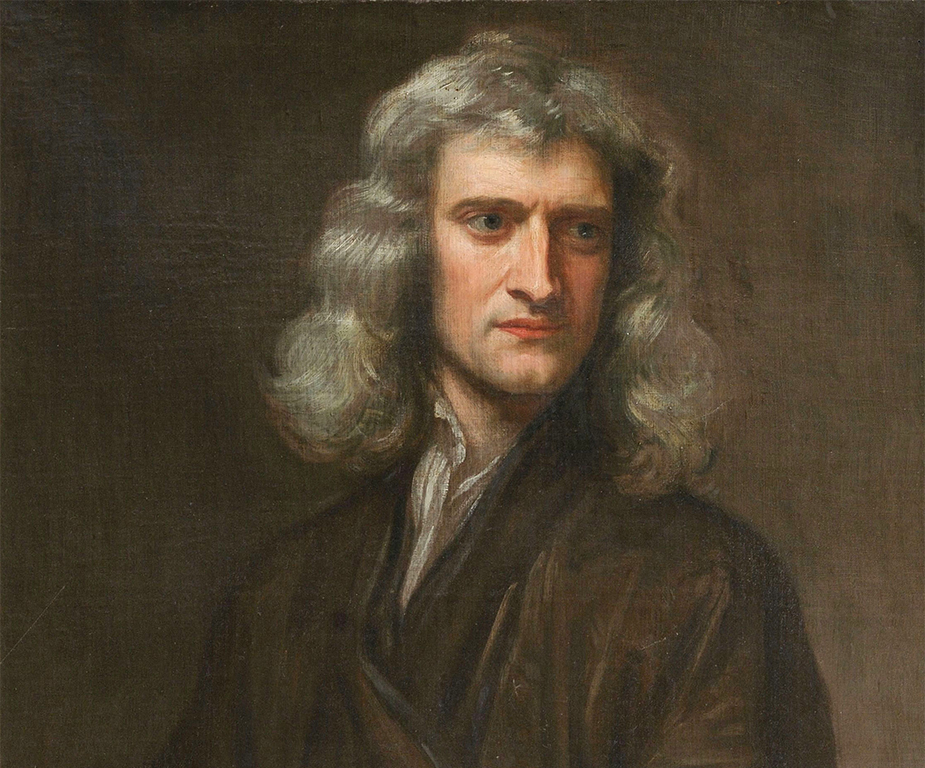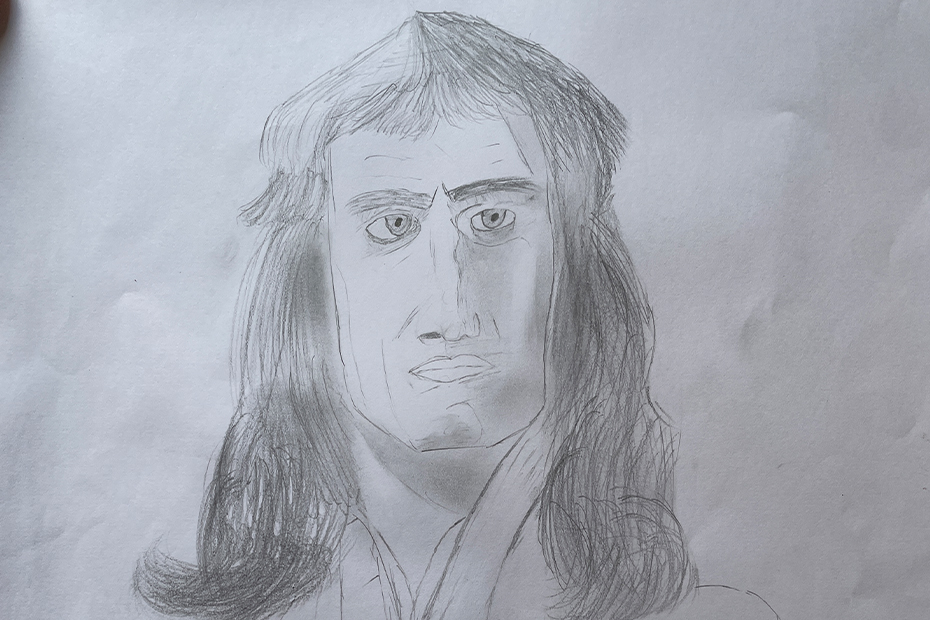Hello and welcome to another episode of my commentaries, today’s topic is the rise of science. I want to take a moment and thank our sponsors – my enthusiasm and my free time. Maybe I’d mention an actual sponsor sometime in the future.
The notion of the ancients and their brilliance in the medieval world was a chokehold on scientific advancement. Many felt that the mysteries of the world were settled on the idea that Aristotle had laid it all out or resolved by god doing it. Catholic theology was also dependent on a lot of the ideas that Saint Augustine developed due to his readings and understanding of Aristotle, so there was a religious and ancient authoritative chokehold on the future of science.
The religious chokehold began to loosen with the weakening of the catholic church, especially in those countries whose official state religion was a form of Protestantism, or simply the state church, which had little power to do anything over the critique of dogma.
Skepticism began with the discovery of the new world because contrary to what Ptolemy believed, there were more than three continents.[1] With the Renaissance, the interest in ancient manuscripts peaked, and eventually, the thinkers of the time had to innovate on their own, since they naturally saw what the ancients believed had some gaps.
With this landscape set, Russel finds four individuals that transformed the way we think of the world, he says “Four great men – Copernicus, Kepler, Galileo, and Newton – are pre-eminent in the creation of science.”[2] I will cover these four in turn briefly as each introduced what we would consider nowadays common-sense knowledge, but which was nonetheless groundbreaking at the time.
Their challenge was against religious dogma, which practically solved any confusion about the state of the world. If something is unexplained, it must be God who sets it in motion or makes it happen. This is the God of the gaps argument, that any gap in science is resolved by saying that it is God who set it in motion.
This can be used for practically anything we don’t understand, and while it may seem nonsensical to some extent, consider that many people can still believe that the reason the Big Bang happened must have been because God set it in motion, otherwise, how could something have come from nothing?
Because of the nature of science today, and the feeling that everything that we don’t know or understand could probably reasonably be understood if we did a bit of research, this argument is not very compelling. At any rate, the argument is unfalsifiable since at all points one could also point to another thing we do not understand, which could be explained by an entity or non-physical presence which can cause material change despite not having materiality, thus – although the big bang is what allowed for physics to work the way it does nowadays, it does not explain how a place could have any change without any physics. Unless, of course, god set it in motion.
Copernicus

We can begin to thank Copernicus by setting forth that the solar system is heliocentric. More precisely, rather than just the solar system, the universe itself. Stars outside our solar system were not thought to be outside of the solar system itself, but part of an outer ring just as planets make rings around the earth, the stars making up the outermost ring. The Ptolemaic system places the Earth in the center, followed by the Moon, Mercury, Venus, the Sun, and so on until the stars.

Aside from decentering the earth in our solar system, Copernicus also put forward that “the earth has a twofold motion: a diurnal rotation, and an annual revolution around the sun.”[3] However, he didn’t claim the glory of his discovery during his lifetime, for fear of censure by the catholic church, so his discoveries were published posthumously, a year after his death.
You can make a funny argument here that this is a sort of primordial soup for existentialism. Humans had been decentered from the solar system, and thus reduced in importance. Russell mentions that another writer doesn’t think that Copernicus was as important as we make him out to be because the empiricists of the time had a lot of evidence to reject these notions.
Empiricists primarily rely on the expectation that what we see is most accurate to the real state of things, since it is likely our main and overriding sensory organ, but the empiricists did not have telescopes, and our eyes are decent, but not better than telescopes and not better than math. Russell provides a counterclaim to this idea, “it is not what the man of science believes that distinguishes him, but how and why he believes it. His beliefs are tentative, not dogmatic; they are based on evidence, not on authority or intuition.” [4]
This idea of what a man of science should be has become relevant again in our times, because of the difficulty of being such a person. The evidence is not as clear, and unsatisfactory answers (oftentimes, that we don’t know) are often abandoned for the comfort of another sufficiently complicated scientific answer which is hard enough for the layperson to misunderstand where it has its gaps, and simple enough for them to rattle it off as an ego-fueled desire to seem intelligent and well informed. I will touch more on this at the end when we have covered the rest of the chapter.
With Copernicus, the discovery of the new world, and other significant and influential discoveries, the grip of dogma began to loosen. However, Copernicus by himself, with his limited evidence, was not enough to change notions of the operations of the world. An interesting b it on Aristotle, it was still held that his “doctrine that change and decay are confined to the sublunary sphere.”[5] This likely sounds bizarre to all of us, but people believed that everything outside of the sphere of the earth, past the moon, was unchanging, and was in an infinite state of orbiting a perfect circle and sometimes entering an epicycle around the earth.
Another astronomer, Tycho Brahe carried the work of Copernicus by collecting data, data on the movement of the stars and the planets across his lifetime, which proved invaluable to the following thinker, Kepler.
Kepler

Kepler came up with the three laws of planetary motion, which are starting with the first, according to Russell: “The planet describe elliptic orbits, of which the sun occupies one focus. His second law states: the line joining a planet to the sun sweeps out equal area in equal times. His third law states: the square of the period of revolution of a planet is proportioned to the cube of its average distance from the sun.”[6] Rather than the Copernican model in which the sun was in the center and the planets orbited in a perfect circle, Kepler showed that it was an ellipse instead. Imagine that the sun is one point and that there is another point slightly offset the sun, around which the earth orbits around. This creates an oval shape rather than a circular one.
Given that planets are moving in an oval, the movement of it is accounted for differently. Simply, when the earth is closest to the sun, it moves faster, and when it is furthest from the sun, it moves slower, so that an equal area at different points in the orbit will be covered just as fast.
For the third law, take the major axis of the ellipsis, the distance between two points in the ellipsis, and take half of it, cube it, this value will be proportional to the time it takes to orbit the sun, and more precisely, this will depend on the mass of the planet. This was extremely difficult to understand, and I source a YouTube channel, Professor Dave Explains, to have understood this better.

This presented another challenge to the belief in perfect order in the universe, Russell says, “The substitution of ellipses for circles involved the abandonment of the aesthetic bias which had governed astronomy ever since Pythagoras. The circle was a perfect figure, and the celestial orbs were perfect bodies – originally gods, and even in Plato and Aristotle closely related to Gods.”[7] The solar system, (again, to them, the universe) had lost its perfect order and was replaced by imperfect ellipses, which required the planets to move at different speeds at different times, at different distances from other planets and the sun, not because of the beauty of the epicycles, circles within circles, but rather the uneven orbits which made up the solar system.
Russell notes that for something like this to be accepted, there had to be an abandonment of the ancient notions and willingness to accept change which meant essentially the reordering of the world. The fact that this had somewhat happened heralded the scientific era to come.
Galileo
For my spiritual number enjoyers, you might find it fun that “[Galileo] was born on about the day on which Michelangelo had died, and he died in the year in which Newton was born.”[8] Just a little bit of evidence for when you decide to start your belief or join one in which souls pass from one body to another, and particularly that great people’s souls pass on.
Galileo, simply, “discovered the importance of acceleration in dynamics.”[9] This may sound trivial to us, but people believed that bodies on Earth would stop moving naturally if left alone. Past the moon, on the other hand, it was believed that things moved infinitely. Contrary to this, Galileo believed that “every body, if let alone, will continue to move in a straight line with uniform velocity; any change, either in the rapidity or the direction of motion, requires to be explained as due to the action of some ‘force.’”[10] This becomes more relevant for Newton when he elaborates on the first law of motion.
More importantly for Galileo, he established the law of falling bodies, that all bodies falling freely will accelerate at a constant rate, except for the interference of air. So he was the first to believe, one could say, that anything falls at the same rate as everything else. He would have laughed at the question of a pound of rocks and a pound of feathers since he wouldn’t have found that the qualifier of quality of the object, nor the weight of the object would have mattered for how fast it would fall anyway. The acceleration of falling, he found, would be ~32 feet per second, meaning that something would be falling at 32 feet per second, then 64 feet per second, then 96, and so on.
Galileo’s practical value for the medieval king, however, was that of projectiles. It was thought that when something was fired horizontally, it would travel so, then it would begin to fall at some point. Through his studies, he found that the horizontal velocity of a projectile would remain the same, but a vertical velocity would be added over time according to the law of falling bodies. [11]
He studied this by simply separating the forces into separate values, considering the horizontal value and the vertical value as separate forces, one can add them at a time in turns, and you could understand more accurately where something would end up. The example given is that if you take the movement of a person on a ship and you want to understand where they are, you take the horizontal movement of the ship while imagining everything else is still, calculate that, the vertical movement of the ship, calculate that, then imagine the ship has stopped, and calculate the horizontal movement of the person on the ship, then the vertical movement, and you would know where the person would end up
What we likely know Galileo best for, however, is that the milky way is made up of several stars and that Jupiter has satellites, which would disrupt the imagination of religious people, and what they thought the solar system was, definitively. While one could shrug away the movement of the planets and the sun since they are slight and would take years to understand firsthand oneself, you could not deny looking through a telescope and seeing the satellites of Jupiter.
The solar system had 7 bodies, and this number was effectively divine. Russell says “Is not sabbath the seventh day? Were there, not the seven-branched candlesticks and the seven churches of Asia?[…] on this ground the traditionalists denounced the telescope, refused to look through it, and maintained that it revealed only delusions.” [12]
People were so upset at the idea that there were more than seven celestial bodies, that Galileo was banned from talking about it by the church. “Galileo, as everyone knows, was condemned by the Inquisition, first privately in 1616, and then publicly in 1633, on which latter occasion he recanted, and promised never again to maintain that the earth rotates or revolves.” [13]
Newton

This work greatly advanced the study of astronomy and motion, which was greatly helpful to Newton, who took up the mantle and became one of the most important figures in early modern history. He neatly tied up all of planetary motion in the concept of gravity – “‘every body attracts every other with a force directly proportional to the product of their masses and inversely proportional to the square of the distance between them.’ From this formula, he was able to deduce everything in planetary theory: the motions of the planets and their satellites, the orbits of comets, and the tides. […] The triumph was so complete that Newton was in danger of becoming another Aristotle, and imposing an insuperable barrier to progress. In England, it was not till a century after his death that men freed themselves from his authority sufficiently to do important original work on the subjects of which he treated.”
Russell goes on to describe many of the inventions of the 17th century, which I will not spend time describing, but instruments became more accurate, some instruments were invented which allowed for the proving of certain ideas which were only hypothesized or confused before. Such that, “in 1700 the mental outlook of educated men was completely modern; in 1600, except among a very few, it was still largely medieval.” [14]
I understate how important Newton is here because his theory is so complete to understanding motion and dynamics that the guy effectively solved physics for a few hundred years. There is little to say in the way of objection or problems in the way of his theory, and I can barely understand it anyways.
Implications in Philosophy
Moving onto philosophy, Russell notes that, “the first thing to note is the removal of almost all traces of animism from the laws of physics [… the Greeks] evidently considered the power of movement a sign of life.” [15] This notion of life inhabiting movement was important since it implied the power of a god or something or other that had a soul in the movement of the world.
Thunder had life, rivers had life, and so on, otherwise, why would they be moving as opposed to a rock, which does not move? In certain ways, there is little difference between a rock and a river, but one ostensibly moves continuously without input, and the other stays perfectly still. To make this more evident, a lake will always have a tide, despite it being a body of water, seemingly unaffected by other forces. Newton proved, however, that the tides were due to the gravitational influence of the moon.
Russell says “All this was changed by the first law of motion. Lifeless matter, once set moving, will continue to move for ever unless stopped by some external cause. Moreover, the external causes of motion turned out to be themselves material, whenever they could be definitively ascertained.” [16]
To some extent, all was settled. If we did not understand it, it was likely because we didn’t have sufficient evidence, rather than god filling in the movement. All of this was greatly inflationary to the Egos of the Western European.
Russell notes that the Western Europeans at the time had conquered a good amount of the world, were becoming wealthier, and respected across the globe, and “when to all this were added the triumphs of science, it is no wonder that the men of the seventeenth century felt themselves to be fine fellows, not the miserable sinners that they still proclaimed themselves on Sundays.” [17]
To conclude this, I’ll return to a point I mentioned earlier in the article. What a man of science ought to be, and the challenge of being so in our times. A supposed man of science in our times does not rely on slow observation or the detailed hypothesis that accounts for the totality of knowledge.
There is too much to lose by not staking out one’s position ahead of time. The Nobel Prize is exemplary of the problem of modern science. People do not necessarily do it because it is prudent for the advance of humanity, but rather because of the glory and honor that comes from being awarded such a prize, or being mentioned in history books forever after.
Science has become so authoritative to the layman that it is practically used as a religion as well. Science says it is the case, so that is what I believe. This notion invades regions that science does not necessarily touch as well, such as spirituality. The effects of spirituality may be scientifically proven in the sense that it makes people happier, but this will only come after stating that there is no evidence for spiritual things as if that affects the actual bodily change that comes from the belief in spiritual things. Just because there is no scientific proof, doesn’t mean that people have a tangible response to the spiritual, which might as well make it true.
Some scientists intentionally fudge data in order to get recognition. The Covid vaccine was a rat race to come up with the solution, and things like hydroxychloroquine were pushed because of evidence unlikely evidence, we can say in hindsight, of it being effective in treating Covid.
The research behind Alzheimer’s was put on a different path a decade ago because a scientist decided to falsify data he had recorded, which set the path of Alzheimer’s research astray since many other experiments funded by the NIH began their hypotheses with the data collected in this original article. In 2006, a man decided to manipulate images from an Alzheimer’s experiment to better fit a hypothesis, and in 2021, another man decided to look into it and realized this very fact. [18]
This is a bizarre thing to realize, we believe that scientists at the very least, have the best in mind. But scientists have an ego, similar to doctors. When a doctor doesn’t know what is happening with a person, they really ought to say that they don’t know, but oftentimes they really wish they could say, ‘It is probably this or that’ without having definitive proof one way or the other. And sometimes they do say it, and set people on an incorrect path for a disease which they don’t have another look at, because one doctor told them it was a certain thing.
On a smaller scale, social media is a plague for scientific honesty. People will share the headlines of an article in order to make a point and refuse to read further into the scientific article. I blame the article writers to some extent, since from the many articles that I’ve read across neuroscience and psychology, these people seem incapable to some extent of writing something that makes sense to the layman, and they might argue that it is not meant for the layman.
But their needless obfuscation and overcomplication can very easily be used to manipulate what they mean. Media companies are motivated to make the scientific article as simplistic and bombastic as possible, which is why every once in a while in the scientific section of any major news company, outlandish claims will be made in the headline, that, at least in more trusted sources, will be clarified in the body of the article, and at worst, in worse sources, will be misrepresented or false
Science requires a lot of patience, and to be humble, but people are much more interested in being the first to have discovered something or to make a point over and above scientific honesty. Pretty much every single scientific statement should be preceded by probably, past the development of the scientific method, we do not consider things proven for the most part, but there is a significant amount of evidence showing that it is one way and not the other. When making scientific statements, one ought to say the evidence of what is the case, rather than saying that x or y is proven.
That is all for this week, next week we have Francis Bacon, someone I don’t know very well.
Citations
“History of Science – Enlightenment, Revolution, Progress | Britannica.” Accessed August 5, 2023. https://www.britannica.com/science/history-of-science/The-rise-of-modern-science.
“Potential Fabrication in Research Images Threatens Key Theory of Alzheimer’s Disease | Science | AAAS.” Accessed August 6, 2023. https://www.science.org/content/article/potential-fabrication-research-images-threatens-key-theory-alzheimers-disease.
Russell, Bertrand. A History of Western Philosophy. A Touchstone Book. New York u.a: Simon and Schuster, 1972.
[1] “History of Science – Enlightenment, Revolution, Progress | Britannica.”
[2] Russell, A History of Western Philosophy. (pp. 525-256)
[3] Russell. (p. 526)
[4] Russell. (p. 526)
[5] Russell. (p. 529)
[6] Russell. (p. 530)
[7] Russell. (p. 530)
[8] Russell. (p. 531)
[9] Russell. (p. 531)
[10] Russell. (p. 532)
[11] Russell. (p. 532)
[12] Russell. (p. 534)
[13] Russell. (p. 534)
[14] Russell. (p. 536)
[15] Russell. (p. 537)
[16] Russell. (p. 537)
[17] Russell. (pp. 538-539)
[18] “Potential Fabrication in Research Images Threatens Key Theory of Alzheimer’s Disease | Science | AAAS.”
